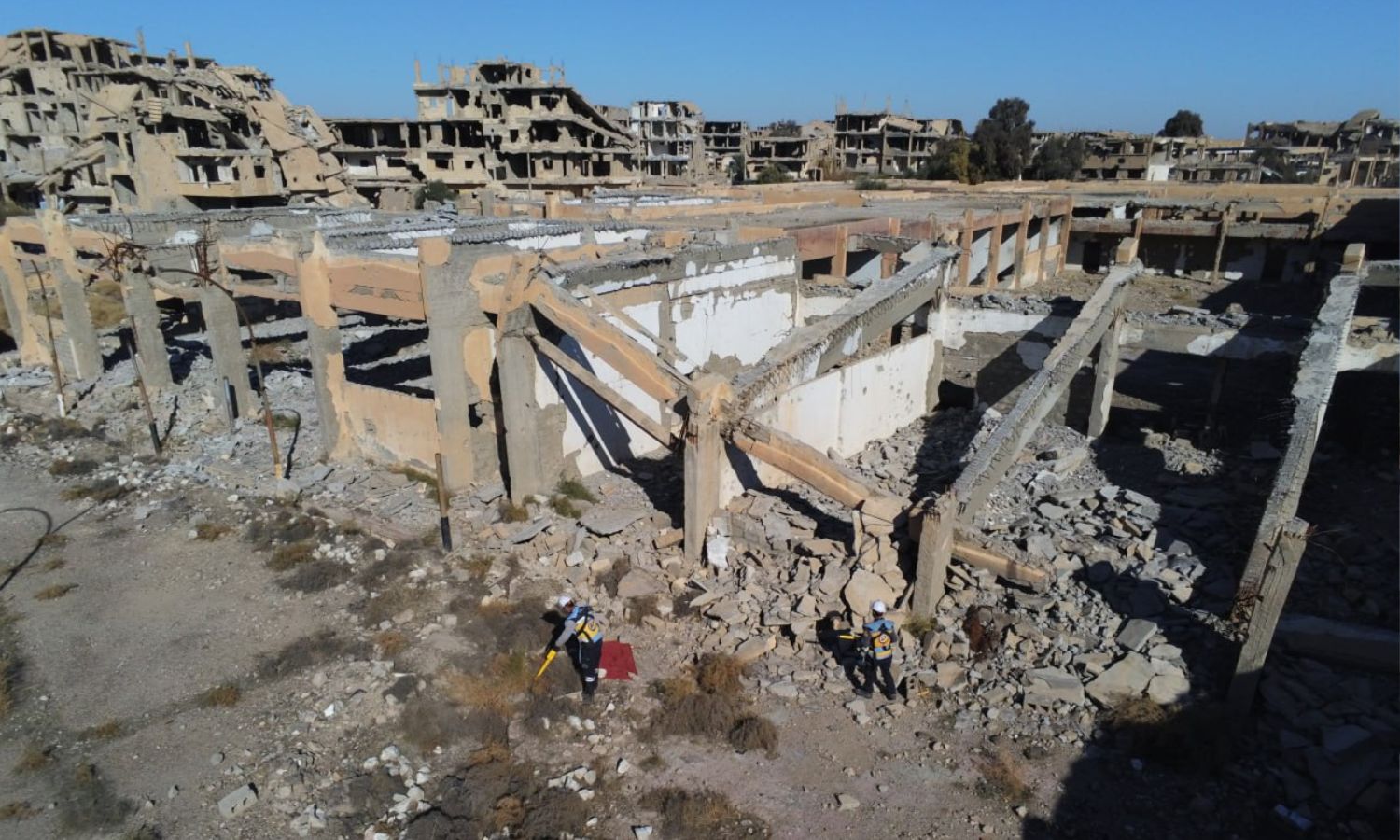
Enab Baladi – Ras al-Ain
The joy of the forty-something-year-old Harith Uqba did not last long after his return to the al-Hweiqah neighborhood in Deir Ezzor, after being displaced for more than ten years by the previous Syrian regime and settling in the city of Tal Abyad in northwestern Raqqa.
Uqba was shocked by the situation in the al-Hweiqah neighborhood, where destruction reached more than 85%, in addition to the absence of essential services such as electricity and water.
Destructed neighborhoods without life forced Uqba and his family of six to flee once again from Deir Ezzor to Tal Abyad after settling in Deir Deir Ezzor for only a month.
Uqba told Enab Baladi that Deir Ezzor is destroyed and uninhabitable, linking his return to the reconstruction process and the provision of basic services, at the very least.
After the fall of Bashar al-Assad’s regime, the hopes of displaced persons returning from the border cities of Ras al-Ain and Tal Abyad to their original areas were dashed, leading them to experience a renewed journey of displacement.
Upon the return of dozens of families to their areas, their homes had been completely destroyed, with a near-total absence of essential services, prompting them to decide to return once again to Ras al-Ain and Tal Abyad while awaiting improvements in conditions in their original areas.
800 people… Back to square one
After the fall of the regime, Hanan Raslan (43 years old) prepared to return with her four children from Ras al-Ain to the Baba Amr neighborhood in the city of Homs, only to find her home damaged and in need of repairs costing more than 50 million Syrian pounds according to her estimate.
She rented a house for herself and her children but could not afford the high rent, which reached two million Syrian pounds per month, in addition to the frequent disconnections of electricity and water.
In mid-March, Raslan and her children returned via smuggling routes to Ras al-Ain to live there until conditions stabilize in Homs and basic services are provided.
Enab Baladi obtained from elders in Ras al-Ain and Tal Abyad statistics showing that about 800 people have returned from Syrian provinces to the two cities.
Meanwhile, the return from the two cities to Syrian provinces currently involves only some young men who are checking the conditions of their homes and properties and studying the possibility of repairs and stability.
70% decrease in departures
Ahmed, who works in smuggling people from Syrian provinces to the cities of Tal Abyad and Ras al-Ain and vice versa, told Enab Baladi that the percentage of departures from the two cities decreased by 70% in April compared to January.
He explained that after the fall of the regime, he used to smuggle about 30 to 40 people daily to Syrian provinces, but currently the situation has reversed, as he is asked to return more than 25 people daily to the two cities.
He pointed out that the majority of returnees are from Deir Ezzor, Homs, and rural Damascus, due to the significant damage those areas have suffered.
A responsible source in Ras al-Ain, who requested anonymity because he was not authorized to speak to the media, told Enab Baladi that the percentage of returnees from Syrian provinces to the city is not accurate, but about 340 returnees have been registered.
He explained that the majority of returnees are from families with no income who have lost their homes and jobs, and the reason for their return is stability, especially since most of them live in homes that have lower rents compared to Syrian provinces, and basic services such as water, bread, and electricity are available.
He noted that he provided the names of the returnees to the associations present in Ras al-Ain to offer them support and provide relief baskets until they are stabilized.
Most displaced persons in Ras al-Ain and Tal Abyad rely on daily labor, while some have opened modest projects to support their families and meet their needs.
On the other hand, another section lives in severe poverty without any source of income, relying largely on charity organizations that do not provide enough for them, forcing them to live in difficult material circumstances.
Ras al-Ain and Tal Abyad are located adjacent to the Turkish border and are controlled by the Syrian government while being surrounded by combat fronts with the Syrian Democratic Forces (SDF), as the only outlet to the outside is the Turkish border.
Obstacles to return
The destruction of buildings and the deterioration of services form a barrier to the return of displaced and refugee Syrians to their areas, in addition to the inability to pay transportation costs and the presence of minefields left by the previous Syrian regime and its allied militias.
The head of the International Organization for Migration of the United Nations, Amy Pope, stated that the large-scale return of Syrian refugees would fuel conflict in Syria and represent a heavy burden on the country, asserting that she does not encourage the return, as “communities are not ready to accommodate refugees.”
Pope urged caution in plans for the return of refugees, indicating that some communities are forced to flee again due to the instability of life under the new authorities, while the UN Special Envoy for Syria, Geir Pedersen, confirmed that the humanitarian situation remains critical.
The United Nations has called on the international community for urgent action to invest in the reconstruction and development of Syria, as UN Under-Secretary-General for Humanitarian Affairs and Emergency Relief Coordinator Tom Fletcher confirmed that expanding basic services will be a critical factor in facilitating the return of Syrian displaced persons to their country.
The post Reverse return to Ras al-Ain and Tal Abyad appeared first on Enab Baladi.